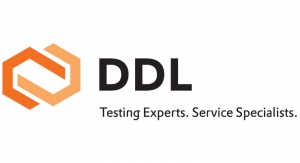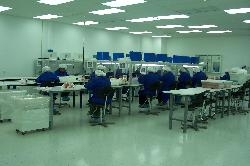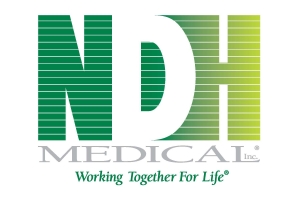Michael Barbella, Managing Editor10.09.20
Consider, for just one moment, the ability to monitor human brain activity at its source. Imagine the knowledge that could be gleaned by directly observing the non-stop electric symphony composed and conducted by a 120 billion-piece neuronal orchestra.
Fancy gaining a ringside seat to this cerebral concerto, without the need for big, bulky machines, strange-looking skull caps, or long, tangle-prone wires. A tiny, perhaps flexible, electrode would suffice as the entrance fee.
To truly witness the magical harmony of the brain’s electric oscillations, that electrode would have to be extremely small—conceivably, 100 nanometers or so (roughly 1,000 times thinner than a human hair).
Creating an electrode of that size certainly is technologically possible. Medical electronics have steadily been shrinking over the last two decades as digital health and minimally invasive surgical procedures spawned a worldwide thirst for smaller, more complex computerized devices that improve diagnoses and tracking. The scramble for diagnostic tests, personal protective equipment, ventilators, and other medical supplies associated with the planet’s battle against COVID-19 is expected to increase demand for medical electronics over the next seven years.
Medical Product Outsourcing’s September feature, “Mission Complete,” details the various trends and challenges currently shaping the custom medical electronics market. Anthony Kalaijakis, strategic medical marketing manager at Molex, was among the experts interviewed for this story. His full input is provided in the following Q&A:
Michael Barbella? What factors must be taken into consideration when designing electronic components for medical devices?
Anthony Kalaijakis: Medical devices cover a massive scope of modalities and applications that require a matrix of considerations for electronic solutions. There are distinct considerations and challenges with several subsets, which include unique requirements and risks with each modality. Even the applications within the same modality can be dramatically different.
For example, in imaging, a magnetic resonance imaging (MRI) system requires electronic components to be non-ferrous with very low magnetic permeability. With computed tomography (CT), the spinning gantry puts significant centrifugal force on the flexible circuits, connectors, and other electronics of which must be considered.
In therapeutics, there are additional levels of complexity from the proximal end of the device through the therapy applied at the distal end as interventional applications require contact on or in the body. Key areas like biocompatibility in material selection, user interface type and materials, impact of sterilization, interaction of mating services including plating and mating cycles must be considered.
It is very helpful to engage with the device manufacturer to set the expectations and needs for the program. This would include the timelines and the regulatory, standards and safety and compliance requirements (e.g. IEC60601) that programable medical devices safety standard must meet. Once the framework is established, there is the flexibility to decide on whether the electronic solution can be obtained commercial-off-the shelf, modified-off-the-shelf, or to custom specifications.
Barbella: Please discuss some of the challenges in designing and manufacturing electronic components for medical devices. How has your company overcome these challenges?
Kalaijakis: There are several challenges manufacturers face when designing and manufacturing electronic components for medical devices. The following is a sampling of trends and challenges manufacturers are keeping pace with to try and ensure safe, quality and reliable components. Molex overcomes these challenges by working closely with its customers to understand their needs and customize components to meet their device design requirements.
Safety: Safety for the patient and staff is of upmost importance. For example, from an electronic components’ supplier to the medtech industry, the ISO14971 standard is just one of the safety standards that provides a framework for mitigating risk in conjunction with the end-customer’s compliance roadmap. The standard provides a methodical process for managing risk related to medical devices by identifying hazards, estimating the risk, evaluating acceptability and establishing risk control measures.
Connected Health: A significant external market force disrupting medtech is the convergence of mobile devices and on-patient wearable monitoring/therapies otherwise known as connected health. This disruptive trend is part evolution and part revolution where everyday devices, like a smart phone, are quickly integrating with medical devices, further increasing the number of use cases and areas of operation. Thus, risk assessment becomes more critical. Components must meet standards and have the ability to power up and connect devices for safe and secure information sharing.
Patient-Provider Dynamic: More recently, the current COVID-19 pandemic highlighted the need for options outside the clinic setting and tele-health services have come to the forefront, likely to change the patient-provider-payer ecosystem. Figuring prominently in this space is the interaction of the personal device, wireless body area networks, cloud services, and population health records while regulators try to figure out how to keep the security of patient privacy.
Barbella: What are customers demanding or expecting in their electronic components?
Kalaijakis: The customers' demand and expectation is that their electronic components be smaller, sleeker, and connected. Medical devices are transforming from the clinical setting to the industry of things (IoT) of connected health with wireless body area networks (WBAN) and mainframe capital equipment applications that are connected via the picture archival and communications systems (PACS) digitizing images and data. The medtech ecosystem is requiring Molex to adapt to the digital transformation that is happening today.
Overall, the medtech market is expecting more than just electronic components but a total solution. There is a need to handle the increased bandwidth, high speed interconnects inclusive of fiber optic interconnects and high signal integrity and speed from data communications, which are pushing innovation and customer expectations for a total solution.
The advantage of being an integrated supplier is seeing that both the market and customer requests are for the assembly of the electronic components and sub-assemblies to be wrapped into a total device solution. For the customer, further integration and the need for a one-stop supply chain is preferred. As such, Molex has brought in contract design and manufacturing (CDMO) into the fold with the Phillips-Medisize acquisition. In addition, the market is asking for upfront design, human factors considerations and regulatory assessment to decide on either a CDMO or medical product outsourcing (MPO) where the emphasis is fulfillment (and improvement) of scale production.
Barbella: How is IoT (Internet of Things) influencing electronic component development?
Kalaijakis: The medical device ecosystem is moving from clinic bedside to mobile devices. At Molex, we have a longstanding pedigree in connected commercial devices that allows for these design concepts for commercial applications to be adapted to medtech.
There has been more innovation in the IoT in home automation, infotainment, automobile networks, and other industries. The vast number of applications and crossover opportunities make this a compelling segment for which Molex is well aligned. By listening to our customers and providing unique and differentiated solutions, we are more focused on medtech solutions that can be agile to adapt to changes.
Barbella: How is the trend toward miniaturization of medical devices driving the design of electronic components? Please explain.
Kalaijakis: Smaller devices mean designers must consider space optimization for even smaller components for power delivery, design flexibility to allow for the incorporation of various enabling technologies and more communication circuits within a tighter footprint. In addition, medical device designers will look to low-profile micro-connectors and wire-to-board and flex-to-board options to help transmit signals and data and power up, all while staying within the constrained space given.
Barbella: Component obsolescence is a challenge in the medtech industry, where the product lifecycle is very long compared to many consumer devices. How can this challenge be overcome?
Kalaijakis: While the convergence of commercial components into medical devices where applicable improves time to market and cost, the compliance requirements cannot be compromised. With the diversity of applications by modality, the challenge becomes the expectation of lifecycles where consumer-oriented devices can modulate based on consumer trends (weeks and months) while medtech devices with a protracted life cycle (~10 years) require a robust product change notification (PCN) process in advance of any changes or obsolescence.
Barbella: How does Molex tackle electronic components shortages and parts obsolescence?
Kalaijakis: In 2009, Molex recognized there was a difference in expectations from the commercial orientation to medtech that led to a corporate level PCN process as a best practice across industries. The Molex PCN process notifies customers either directly or through our channel partners, of the pending change in an automated fashion. The customer could review the PCN to assess impact and any special considerations through the PCN gateway.
Shortages are addressed through customer service and operations with the goal of advance notification to mitigate impact. This is an acute dialogue with customer supply chain and the Molex operations involved.
There are long-standing coping mechanisms for obsolescence from last-time buy deals to using third-party long-term storage facilities to cover anticipated future support, especially for end-of-life management. Molex also works with our distribution and contract manufacturing partners as an approach to mitigate this challenge.
Barbella: Please discuss any other trends you are noticing in electronic component development (medical devices).
Kalaijakis: One of the greater trends we are experiencing in medtech is robotic assist. This is trending not only in the surgical space, where the first mover activity started, but in several other areas including drug delivery systems, rehabilitation therapy, sterilization, remote ambulatory assistance, telemedicine, and many others. In addition, there are unique applications surfacing daily, changing the scope of component development. The common thread is smaller, less visible, and connected.
Fancy gaining a ringside seat to this cerebral concerto, without the need for big, bulky machines, strange-looking skull caps, or long, tangle-prone wires. A tiny, perhaps flexible, electrode would suffice as the entrance fee.
To truly witness the magical harmony of the brain’s electric oscillations, that electrode would have to be extremely small—conceivably, 100 nanometers or so (roughly 1,000 times thinner than a human hair).
Creating an electrode of that size certainly is technologically possible. Medical electronics have steadily been shrinking over the last two decades as digital health and minimally invasive surgical procedures spawned a worldwide thirst for smaller, more complex computerized devices that improve diagnoses and tracking. The scramble for diagnostic tests, personal protective equipment, ventilators, and other medical supplies associated with the planet’s battle against COVID-19 is expected to increase demand for medical electronics over the next seven years.
Medical Product Outsourcing’s September feature, “Mission Complete,” details the various trends and challenges currently shaping the custom medical electronics market. Anthony Kalaijakis, strategic medical marketing manager at Molex, was among the experts interviewed for this story. His full input is provided in the following Q&A:
Michael Barbella? What factors must be taken into consideration when designing electronic components for medical devices?
Anthony Kalaijakis: Medical devices cover a massive scope of modalities and applications that require a matrix of considerations for electronic solutions. There are distinct considerations and challenges with several subsets, which include unique requirements and risks with each modality. Even the applications within the same modality can be dramatically different.
For example, in imaging, a magnetic resonance imaging (MRI) system requires electronic components to be non-ferrous with very low magnetic permeability. With computed tomography (CT), the spinning gantry puts significant centrifugal force on the flexible circuits, connectors, and other electronics of which must be considered.
In therapeutics, there are additional levels of complexity from the proximal end of the device through the therapy applied at the distal end as interventional applications require contact on or in the body. Key areas like biocompatibility in material selection, user interface type and materials, impact of sterilization, interaction of mating services including plating and mating cycles must be considered.
It is very helpful to engage with the device manufacturer to set the expectations and needs for the program. This would include the timelines and the regulatory, standards and safety and compliance requirements (e.g. IEC60601) that programable medical devices safety standard must meet. Once the framework is established, there is the flexibility to decide on whether the electronic solution can be obtained commercial-off-the shelf, modified-off-the-shelf, or to custom specifications.
Barbella: Please discuss some of the challenges in designing and manufacturing electronic components for medical devices. How has your company overcome these challenges?
Kalaijakis: There are several challenges manufacturers face when designing and manufacturing electronic components for medical devices. The following is a sampling of trends and challenges manufacturers are keeping pace with to try and ensure safe, quality and reliable components. Molex overcomes these challenges by working closely with its customers to understand their needs and customize components to meet their device design requirements.
Safety: Safety for the patient and staff is of upmost importance. For example, from an electronic components’ supplier to the medtech industry, the ISO14971 standard is just one of the safety standards that provides a framework for mitigating risk in conjunction with the end-customer’s compliance roadmap. The standard provides a methodical process for managing risk related to medical devices by identifying hazards, estimating the risk, evaluating acceptability and establishing risk control measures.
Connected Health: A significant external market force disrupting medtech is the convergence of mobile devices and on-patient wearable monitoring/therapies otherwise known as connected health. This disruptive trend is part evolution and part revolution where everyday devices, like a smart phone, are quickly integrating with medical devices, further increasing the number of use cases and areas of operation. Thus, risk assessment becomes more critical. Components must meet standards and have the ability to power up and connect devices for safe and secure information sharing.
Patient-Provider Dynamic: More recently, the current COVID-19 pandemic highlighted the need for options outside the clinic setting and tele-health services have come to the forefront, likely to change the patient-provider-payer ecosystem. Figuring prominently in this space is the interaction of the personal device, wireless body area networks, cloud services, and population health records while regulators try to figure out how to keep the security of patient privacy.
Barbella: What are customers demanding or expecting in their electronic components?
Kalaijakis: The customers' demand and expectation is that their electronic components be smaller, sleeker, and connected. Medical devices are transforming from the clinical setting to the industry of things (IoT) of connected health with wireless body area networks (WBAN) and mainframe capital equipment applications that are connected via the picture archival and communications systems (PACS) digitizing images and data. The medtech ecosystem is requiring Molex to adapt to the digital transformation that is happening today.
Overall, the medtech market is expecting more than just electronic components but a total solution. There is a need to handle the increased bandwidth, high speed interconnects inclusive of fiber optic interconnects and high signal integrity and speed from data communications, which are pushing innovation and customer expectations for a total solution.
The advantage of being an integrated supplier is seeing that both the market and customer requests are for the assembly of the electronic components and sub-assemblies to be wrapped into a total device solution. For the customer, further integration and the need for a one-stop supply chain is preferred. As such, Molex has brought in contract design and manufacturing (CDMO) into the fold with the Phillips-Medisize acquisition. In addition, the market is asking for upfront design, human factors considerations and regulatory assessment to decide on either a CDMO or medical product outsourcing (MPO) where the emphasis is fulfillment (and improvement) of scale production.
Barbella: How is IoT (Internet of Things) influencing electronic component development?
Kalaijakis: The medical device ecosystem is moving from clinic bedside to mobile devices. At Molex, we have a longstanding pedigree in connected commercial devices that allows for these design concepts for commercial applications to be adapted to medtech.
There has been more innovation in the IoT in home automation, infotainment, automobile networks, and other industries. The vast number of applications and crossover opportunities make this a compelling segment for which Molex is well aligned. By listening to our customers and providing unique and differentiated solutions, we are more focused on medtech solutions that can be agile to adapt to changes.
Barbella: How is the trend toward miniaturization of medical devices driving the design of electronic components? Please explain.
Kalaijakis: Smaller devices mean designers must consider space optimization for even smaller components for power delivery, design flexibility to allow for the incorporation of various enabling technologies and more communication circuits within a tighter footprint. In addition, medical device designers will look to low-profile micro-connectors and wire-to-board and flex-to-board options to help transmit signals and data and power up, all while staying within the constrained space given.
Barbella: Component obsolescence is a challenge in the medtech industry, where the product lifecycle is very long compared to many consumer devices. How can this challenge be overcome?
Kalaijakis: While the convergence of commercial components into medical devices where applicable improves time to market and cost, the compliance requirements cannot be compromised. With the diversity of applications by modality, the challenge becomes the expectation of lifecycles where consumer-oriented devices can modulate based on consumer trends (weeks and months) while medtech devices with a protracted life cycle (~10 years) require a robust product change notification (PCN) process in advance of any changes or obsolescence.
Barbella: How does Molex tackle electronic components shortages and parts obsolescence?
Kalaijakis: In 2009, Molex recognized there was a difference in expectations from the commercial orientation to medtech that led to a corporate level PCN process as a best practice across industries. The Molex PCN process notifies customers either directly or through our channel partners, of the pending change in an automated fashion. The customer could review the PCN to assess impact and any special considerations through the PCN gateway.
Shortages are addressed through customer service and operations with the goal of advance notification to mitigate impact. This is an acute dialogue with customer supply chain and the Molex operations involved.
There are long-standing coping mechanisms for obsolescence from last-time buy deals to using third-party long-term storage facilities to cover anticipated future support, especially for end-of-life management. Molex also works with our distribution and contract manufacturing partners as an approach to mitigate this challenge.
Barbella: Please discuss any other trends you are noticing in electronic component development (medical devices).
Kalaijakis: One of the greater trends we are experiencing in medtech is robotic assist. This is trending not only in the surgical space, where the first mover activity started, but in several other areas including drug delivery systems, rehabilitation therapy, sterilization, remote ambulatory assistance, telemedicine, and many others. In addition, there are unique applications surfacing daily, changing the scope of component development. The common thread is smaller, less visible, and connected.






















